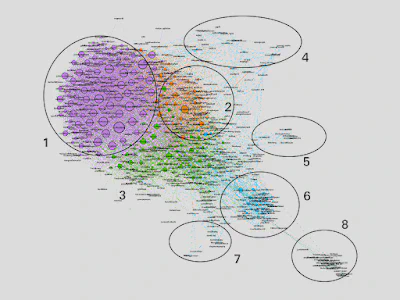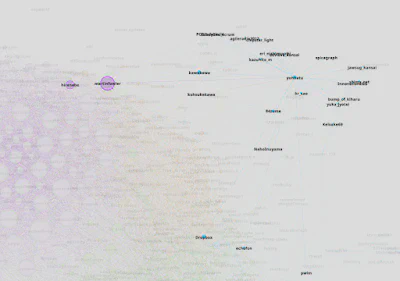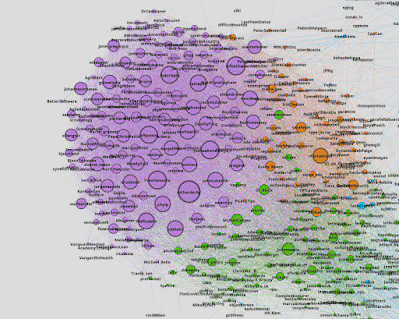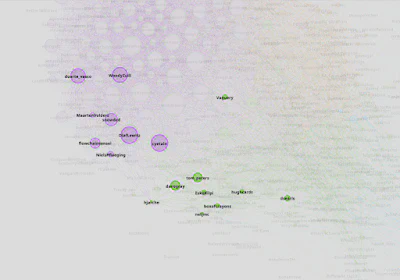Analysing My Twitter Network
I have been on twitter for more then 10 years, but normally use it as a source of information, just reading tweets rather than for conversations. As part of @hjarche’s PKM workshop I thought it would be interesting to look at the connections between those that I follow on twitter and see what networks exist.
There seem to be many tools for analysing twitter followers demographics and for analysing tweets but not so many for looking at networks of those you follow (at least that I could find with a Google search).
However, I found a series of Python scripts that extracts connections between followers of followees. This process is very slow because twitter rate-limits the access to its API to 15 calls in 15 minutes. So extracting the information for the 600 people I follow took 10 hours. It also requires access tokens which means signing up for a Twitter developer account.
The output from the scripts is a CSV file suitable for use with Gephi. I had not come across Gephi before, so this process also introduced me to a new graph analysis tool which might help with another of my problems, that of looking at the dependencies between a lot of software modules in a large program.
The process with Gephi is to load the graph file from the Python scripts and then runs some analysis and use the automatic layout algorithms to layout the graph. I found a tutorial that explains the basic details.
This produced a graph for those I follow on twitter like this:

The nodes on the graph are the people I follow on Twitter. The edges in the graph are the followship links between these people. The size of the nodes depends on how many connections there are to that node.
The “modularity analysis” found 6 “communities” based on the connection information, this is represented by the different colours. However looking at the graph, 8 different main groups seem to exist.
- This is the main group I follow mostly software development related, especially agile software.
- This is also technical but seems to form a different group from 1.
- This group consists of twitter personalities, or more business related topics.
- These are Japanese software developers.
- This small group is a technical niche for 3D CAD
- This group is related to Japan so is mostly separate from other groups
- Photography related
- Japanese Jazz artists
The lack of connection between groups 4 and 8 and the rest does not surprise me due to the language difference. These groups tweet in Japanese whereas the rest are English. Even though the Japanese developers have a strong interest in “agile software development” there are few links to the non-Japanese developers I follow:

It is clear that the main group I follow is the “software development” group. I it is interesting to me that the analysis algorithm split this into two groups.

Since this exercise was prompted by the PKM workshop I looked at the people that @hjarche and myself both follow. I was surprised that there are only a few that be both follow:

I am not sure where to go from here. My list of follows needs some pruning. Also, some areas need expanding.
This analysis just looks at connections between people, not at how often they tweet. The timeline tends to be dominated by a small number of prolific tweeters / re-tweeters so some of the conversations in the main groups probably get drowned out.
Links
- PKM Workshop: https://jarche.com/pkm/pkm-workshop/
- Gephi: https://gephi.org/
- Egonet Scripts: https://github.com/alumbreras/twitter-followers-graph
Note, the README description for the scripts is out of date.
The name of the script has changed and the commands are now:
python egonet.py -u username -f followees python egonet.py -u username -f followees_graph